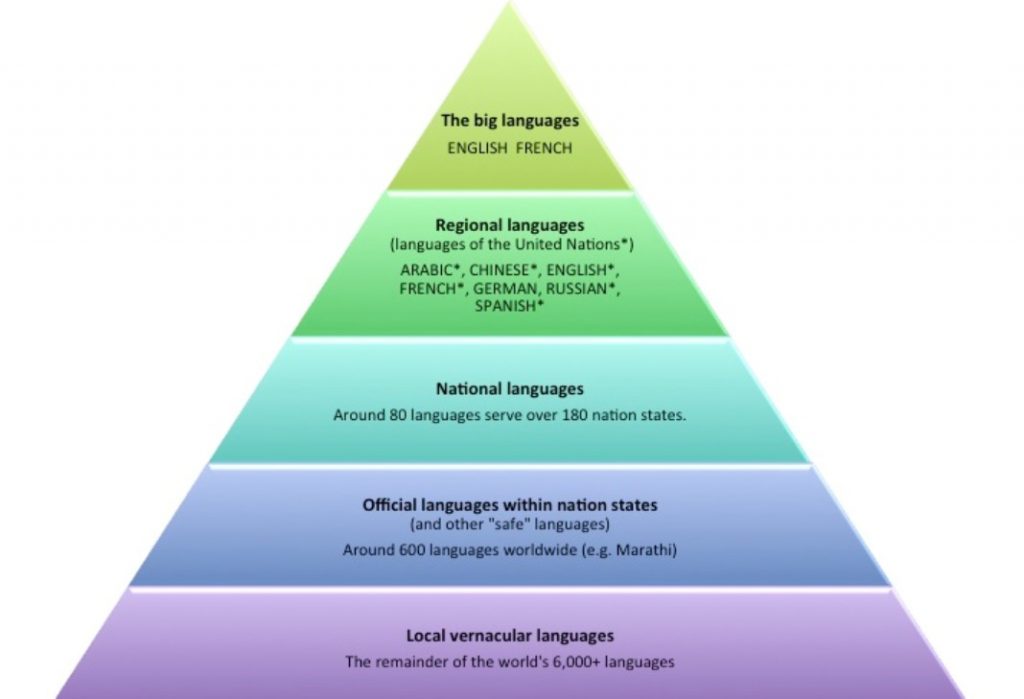Hierarchy is the edifice of essentials from one stage to the other stage. It is an informal affiliation. The language is the bumpy construction of hierarchy. Generally, hierarchy is the representation of a pyramid where altitude of the pyramid will correspond to the grade and thickness stands for the excellence of that stage virtual to the complete.
Why follow the hierarchy?
Hierarchy is very much significant in the direction of the unrelenting development in learning anything. For example,syntax identifies the process or set of laws to unite the word. The other example is that syntax is constrained by articulate our own thoughts.
Types of Hierarchy in the Language:
There are six levels of the Hierarchy of language.
- Phonology
- Morphology
- Lexical
- Syntax
- Semantics
- Pragmatics
Phonology: It is the way to learn basic sounds. It’s the combination of several discernible verbal skills called as phonemes. These phonemes are skilled as dissimilar reverberations of the resident speakers.
Example: pat and bat vary by simply one phoneme. These verbal skills are pronounced carefully with the help of tongue and Lips. In the 1950s the difference was expressed with the help of its onset time. The terms with the onset time less than 20ms are pronounced as ’b’. If the onset time is greater than 40ms it’s pronounced as “P”. We examine the sounds are equally alike.
These phonemes tranquil the subordinate stage of exclusive characteristics. Numerous sound notable in other languages that are not eminent in English and vice versa. Many reverberations that are essentially dissimilar are treated as equal. Constraints are also categorized on the variety of reverberation we hear and pronounce. There are some specified rules on stress patterns and intonation. That is a difference between the statement and the question. Numerous semantic and syntactic distinctions pivot on phonology. There are 95 consonants and 46 vowel sounds. English consists of utmost 40 dissimilar sounds; no language uses all these handy sounds.

Morphology: Grouping of the different arrangement of various tones and essential alphabets. The smallest unit carrying useful information in the language is called a morpheme. Morphemes are used as suffixes and number of words uses many morphemes. Example: Pluralizing “S” in English and the usage of verb conclusions such as ‘ed’ and ‘ing’.
All the words are framed using diverse morphemes, as they coalesce in comfortable ways. It is the syntactic level of words framing in order. A few morphemes are suffixes as they are used as the stem-like structure. A few languages in which infix method of attachment is employed. In this Infix method, one morpheme is used inside another morpheme. Dissimilar ways of changing the syntactic and semantic roles are varied in gigantic and puzzling ranges. Example: dis-way, apart; in-in, into; inter-between.
Lexical: These are the individual words. These can be used as single words or used as multi-morphemes which suit the idea prevailing in our brain. For example: if you are asked to read the same word in a strident manner repeatedly then you will read it in the same manner as the word is. There is a number of ways in which these words are used and its relationship with each other. These words are related to each other.
If anyone asks you to produce a poem, then it’s a bit difficult as there is a need to create an internal element. In the similar mode if you are asked to start a poem with a particular letter it becomes easier. I mean to say that this lexicon is arranged in a number of ways in our head. Meaning of the word is contained relative to the words connected.
Syntax: it is the process where we use the collective words in conveying our views. The most excellent illustration which delivers its importance is the textbook which delivers the complete access to phonology and morphology. If the words are arranged in the order, it delivers the enormous quantity of information. There are many restrictions in using the words collectively. But these restrictions are can go jointly at the task level. The task may be performed by multi word strings. Each element which fills the role in completing the task is called as the constituent. Constituents play a role in communicating the techniques used in commanding the language. Language corresponds to a little sort of depiction which facilitates to commence cognitive science. There is a difference between the explanation and the description of expressing our ideas. These ideas are articulated by means of high-quality grammar.
Semantics: it’s the process of relating reason with an ideal meaning. The classification of semantics is of two kinds, and they are Logical Semantics and Lexical semantics.
Logical semantics: it is the way of expressing the ideas in a logical manner. Logical semantics can be portrayed as fact provisional semantics and model conditioned semantics while expressing the sets of sentences.
Lexical Semantics: it is the type of linguistic semantics which expresses the ideas including words and sub-words.
Pragmatics: it ascertains the preferences of words and interpreting it different ways and its settings. It relates to making use of verbal communication in communal contexts and the ways of expressing ideas with appropriate meaning by using language.
There are no linguistic interchanges in the single sentence. If we are using multiple sentences, then there are many rules in relating each other. These rules will help us in delivering the speech in most excellent manner.
